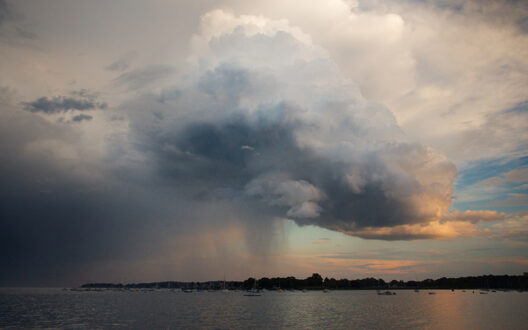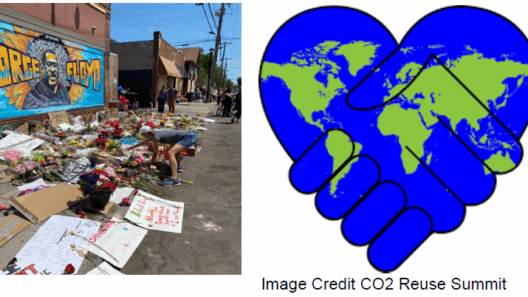Forests are often described as the lungs of our planet, a vibrant tapestry of life that not only beautifies the Earth but also plays a pivotal role in mitigating the effects of climate change. The power of trees to combat global warming lies in their remarkable capacity to absorb carbon dioxide (CO2), a primary greenhouse gas associated with climate change. This ability is akin to nature’s sophisticated filtration system, where each tree functions as a vital component, filtering air and storing carbon in its bark, branches, and roots.
In the intricate dance of climate regulation, trees engage in a process known as photosynthesis. Through this process, they take in carbon dioxide and release oxygen, a dichotomous gift that sustains life on Earth. When we consider the sheer scale of our planet’s forests—covering roughly 30% of terrestrial land—it becomes apparent that they are not mere bystanders in the climate crisis but rather formidable defenders against atmospheric CO2.
One of the most compelling attributes of trees is their longevity and capacity for growth. An ancient redwood tree, for instance, might absorb several tons of carbon throughout its lifetime. This resilience encapsulates a rich history of sequestering carbon, which means that as younger trees grow and mature, they continue to draw down increasing amounts of CO2. In essence, each tree is akin to a time capsule of carbon; the longer they thrive, the more they shield us from the inescapable consequences of our fossil-fuel-dependent existence.
Moreover, the interconnectivity of forest ecosystems adds another layer of complexity to their role in climate regulation. Trees do not stand alone; they form symbiotic relationships with various species of plants, fungi, and microorganisms. This rich biodiversity fosters a robust network that enhances resilience against climate fluctuations. For example, a forest with diverse flora and fauna is more capable of withstanding pests, diseases, and severe weather conditions, thereby maintaining its efficacy in carbon sequestration. The diversity of a forest is crucial; each species brings its own strengths to the collective effort of sustaining the ecosystem.
In considering the role of trees, one must also examine the phenomenon known as “urban forests.” In cities, trees serve as verdant oases, providing a reprieve from the heat island effect that urbanization often exacerbates. Each tree planted within a city represents a small fortress against rising temperatures, absorbing sunlight that would otherwise contribute to the warming of urban landscapes. Furthermore, urban trees contribute to improved air quality by filtering pollutants and lowering particulate matter, creating healthier living environments.
Yet, the battle against global warming cannot be fought solely by existing forests. Reforestation and afforestation—planting trees in areas where they have been depleted or in new areas altogether—are crucial strategies in this fight. These endeavors not only restore lost carbon sinks but also provide habitats for endangered species, enhance biodiversity, and improve soil quality. The concept of reforestation is a hopeful narrative; it is a tangible manifestation of humanity’s commitment to healing the planet. Initiatives around the globe are gaining traction; from planting mangroves in coastal regions to re-establishing native trees in deforested areas, communities are embracing the intrinsic value of forests.
Furthermore, preserving existing forests is imperative. Deforestation, driven by agriculture, logging, and urban development, accelerates the loss of carbon sinks and diminishes biodiversity. This catastrophic trend does not merely contribute to climate change but heralds the extinction of myriad species and the collapse of entire ecosystems. Protecting our forests from such threats is akin to safeguarding our own future; it is an act of defiance against the forces threatening our planet’s resilience.
The impacts of global warming extend beyond temperature increases and rising sea levels. They manifest in shifting weather patterns, exacerbated natural disasters, and dwindling water resources. Trees play an indispensable role in sustaining water cycles, influencing rainfall patterns, and regulating local climates. Their roots penetrate deep into the ground, preventing soil erosion and enhancing groundwater recharge. A well-forested watershed is nature’s insurance policy against floods and droughts, helping to modulate water supply and addressing the challenges posed by changing climatic conditions.
Moreover, trees foster community resilience against climate change. They provide not only a source of shade and beauty but also raw materials for traditional crafts and forest products. Sustainable forestry practices can generate income for local communities while allowing forests to thrive. By embedding conservation into the socioeconomic fabric of communities, a harmonious relationship between humanity and nature can flourish. Collaborating with indigenous populations, who often act as stewards of the land, acknowledges their knowledge and rights while fostering conservation efforts that are rooted in respect and reciprocity.
In conclusion, it is imperative that we recognize the multifaceted role trees play in tackling global warming. They are more than mere vegetation; they are resilient sentinels standing guard against the encroaching adversities of climate change. As we navigate this uncertain future, investing in the protection, restoration, and expansion of forests emerges as a non-negotiable strategy. Each tree planted is a step toward a more sustainable world, a testament to our commitment to preserving biodiversity, safeguarding our climate, and nurturing a healthier planet for future generations. The narrative of trees is intricately woven into the story of our Earth—a tale of resilience, hope, and the enduring power of nature in the face of adversity.






